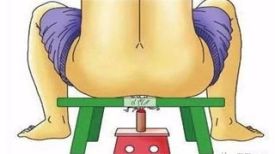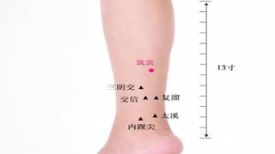
How to determine if a child's weight is normal?
A mother recounted:
A few days ago, I took my baby (13 months old) to see a traditional Chinese medicine doctor. I asked a traditional Chinese medicine practitioner to help me take my baby's pulse because he hasn't gained weight in the past few months, and I'm a bit worried. He should have had a step like growth, but since he hasn't grown, I'm very worried. He's just growing tall without gaining weight. Then I asked a traditional Chinese medicine practitioner to take his pulse, and they said he's a bit weak.
Dr. Peng Xin explained:
Weight is the total weight of the body. The change in body weight and whether the child's weight is normal can determine the child's growth, development, and nutritional status. If the baby is sick, the dosage can also be calculated based on their weight.
The average birth weight of newborns is 3 kilograms, with the lowest normal range being 2.5 kilograms (full-term). Normally, there is physiological weight loss in the first few days after birth, which can be reduced by 6% to 9% by 3-4 days. If it exceeds 10%, it should be considered pathological or inadequate feeding. After 3-4 days, the weight begins to rise again, usually within 7-10 days, returning to the birth weight.
In the future, weight gradually increases, and the younger the age, the faster the growth. Under reasonable feeding conditions, the growth rate is the fastest in the first three months, with an average daily increase of 25-30 grams. In the first half of the year, the average monthly increase is 600 grams, and in the second half of the year, the average monthly increase is 500 grams.
Reference Table for Monthly (Annual) Weight Growth of Baby:
Month age
Monthly weight gain (in grams)
Within 3 months
About 800-1200
3-6 months
About 500-700
6-12 months
About 300-400
Age
Annual weight gain (in grams)
1-2 years old
About 2500
2-10 years old
About 2000
What are the characteristics of height growth in children?
Height, also known as body length, is an important indicator of whether a child's skeletal development is normal. Height is the full length of the body, including the length of the head, spine, and lower limbs, and these three parts have different developmental stages and some characteristics.
Head length
The midpoint of the head length is located between the eyebrows at birth, and the level of the eyes is below the midpoint. Afterwards, the midpoint gradually moves downwards, and due to the growth of the facial and nasal bones, it coincides with the level of the eyes at the midpoint of adulthood.
Sit high
Sitting height refers to the height at which a child sits upright, from the top of the head to the ischial tuberosity (which may be affected by the thickness of the soft tissue in the buttocks). At birth, sitting height is 66% of the body length; At the age of 4, it is 60%; Less than 60% at the age of 6-7.
Upper and lower measurements
Upper measurement, from the top of the head to the upper edge of the pubic symphysis; Lower measurement, from the upper edge of the pubic symphysis to the sole of the foot. The upper volume mainly represents the growth of the head, body, and spine, while the lower volume represents the growth of the lower limb bones. At birth, the upper part accounts for about 60% of the body length; The lower part accounts for about 40%; Therefore, the midpoint of the body length is located above the navel, indicating that the lower limbs are very short.
At the age of 1, the midpoint moves to the navel, and at the age of 6, it moves to the lower abdomen; Around the age of 12, the upper and lower parts are equally sized, with the midpoint just above the pubic symphysis. The upper part of the body can sometimes reach twice the amount at birth by the age of 7, while the lower part doubles after the age of 3, indicating that the growth of a child's length is mainly due to the growth of long bones. For taller individuals, the lower limbs are longer, while for shorter individuals, the lower limbs are relatively shorter.
There are many factors that affect a child's length, among which genetics, nutrition, physical activity, and diseases are the main causes. If the body length is significantly short, factors such as dwarfism, cretinism, and malnutrition in children should be considered.
Measuring the length of a baby can be done using a measuring board in a supine position. Children over 3 years old are required to stand upright with their backs on the column or wall of the body length meter, so that the heels of both feet, buttocks, and shoulders are in contact, and their gaze is forward. The line connecting the upper edge of the two ear holes and the lower edge of the eye socket forms a horizontal plane.
Reference Table for Monthly (Annual) Height Growth of Baby:
Month age
Monthly height growth (unit: centimeters)
Within 3 months
About 3-3.5
3-6 months
About 2-2.8
6-12 months
About 1-1.5
Age
Annual height growth (in centimeters)
1-2 years old
About 10
2-10 years old
About 5 to 7.5
What is the relationship between a child's height and weight?
Height and weight are both signs of health. Before the age of 2-3, there is a significant increase in weight gain; During the age of 3-7, weight gain is not as rapid as body length, and weight gain accelerates thereafter.
Both have increased significantly since adolescence, with gender differences. Before and after puberty, boys tend to have a higher weight and height than girls. Due to the early onset of puberty in girls, typically between the ages of 11-12 and 13-14, their weight and height are significantly higher than those of boys. The height and weight changes of children with excessive obesity are different from the general pattern.
Disclaimer: This article is a sharing of health knowledge. The drugs, prescriptions, acupuncture and moxibustion and other treatment and health preserving methods mentioned in this article should be applied under the guidance of professional doctors, and should not be applied by yourself. We are not responsible for any issues arising from improper use.


